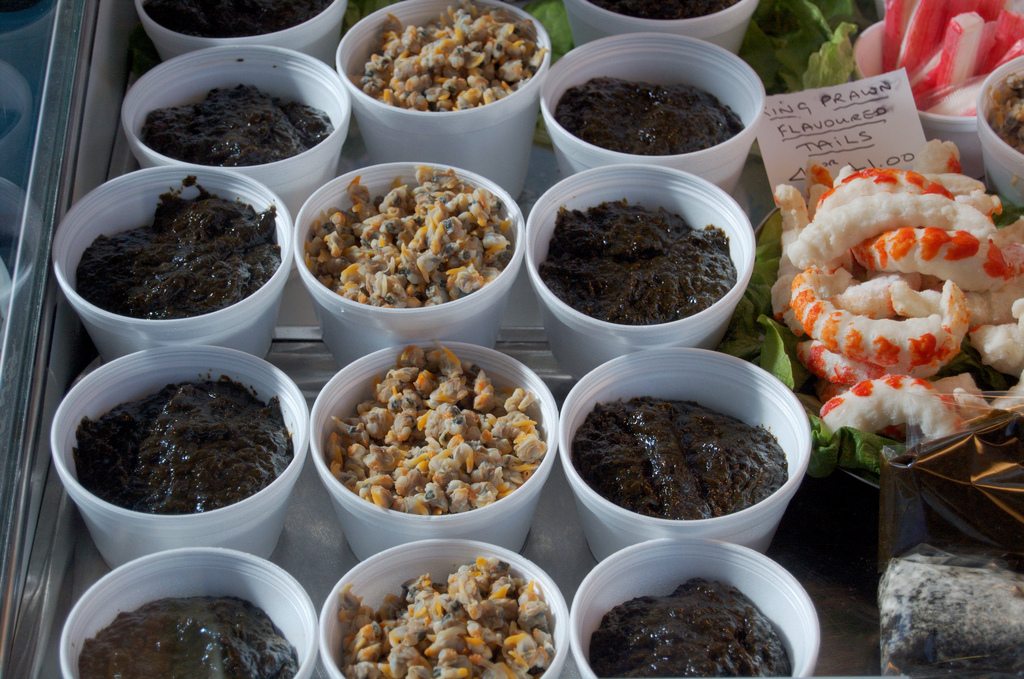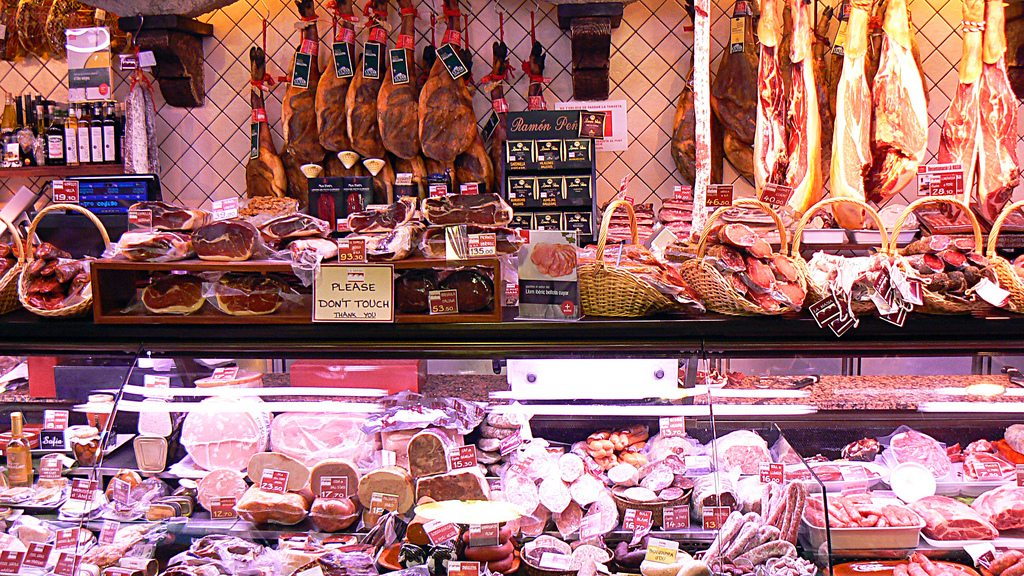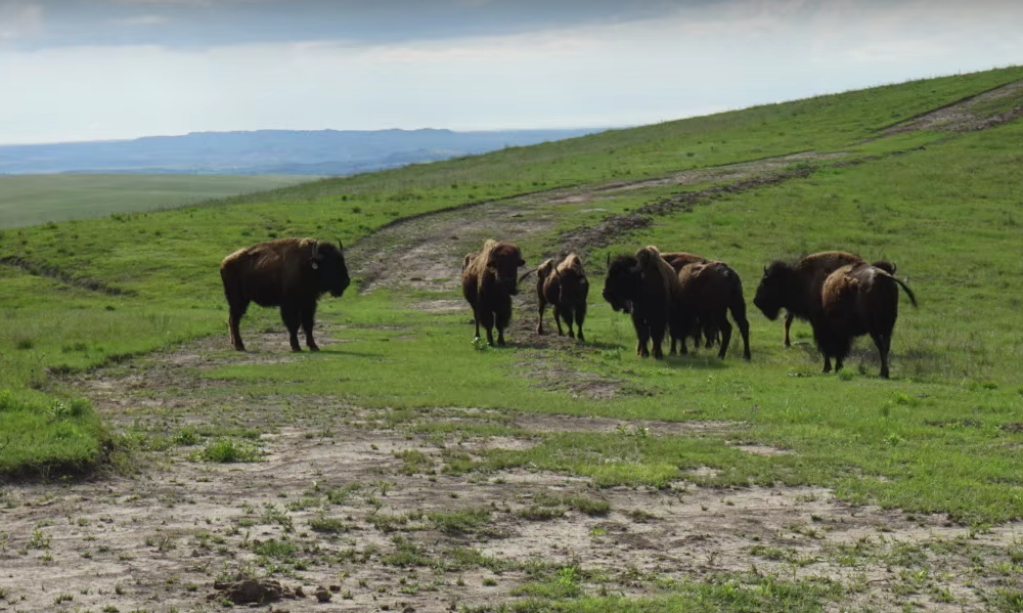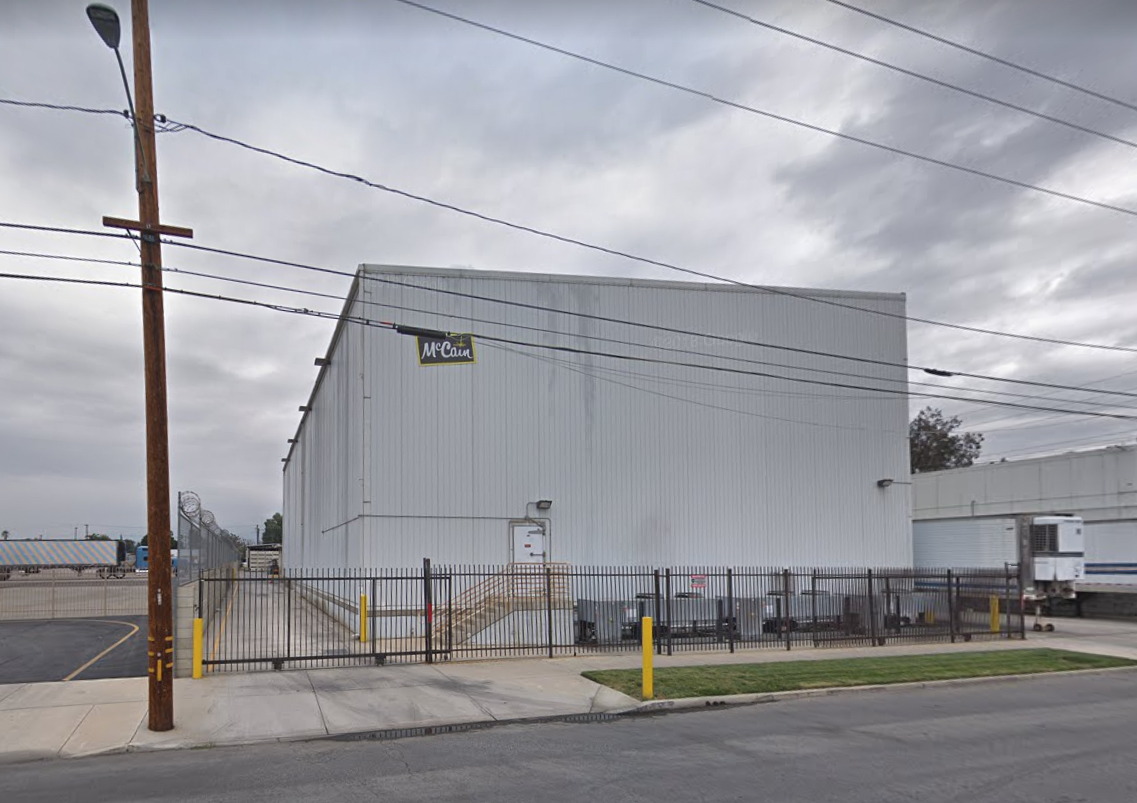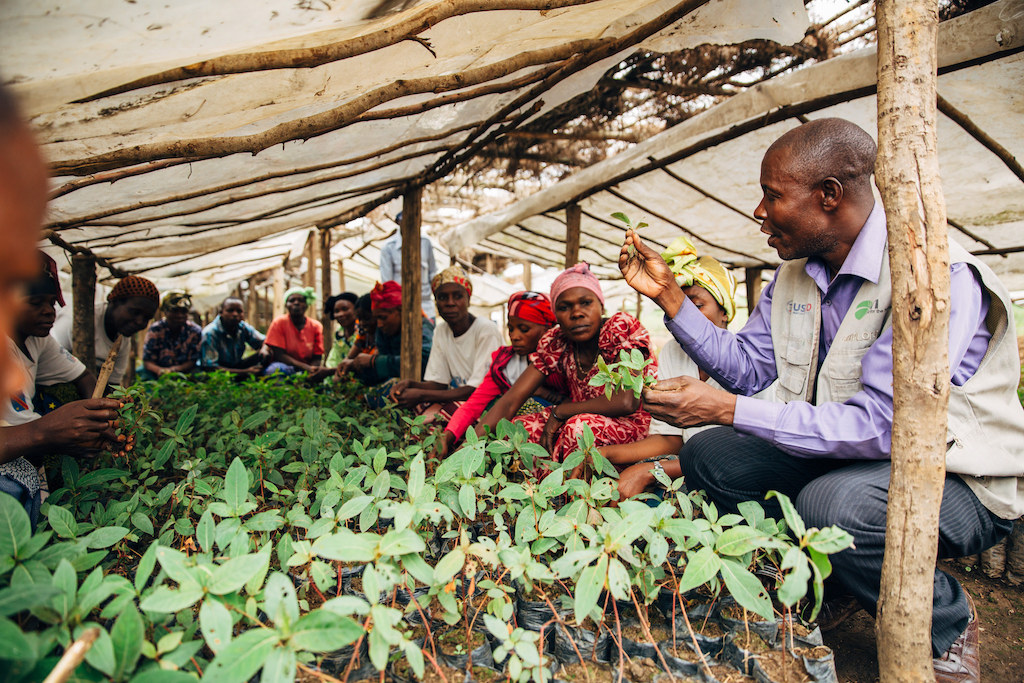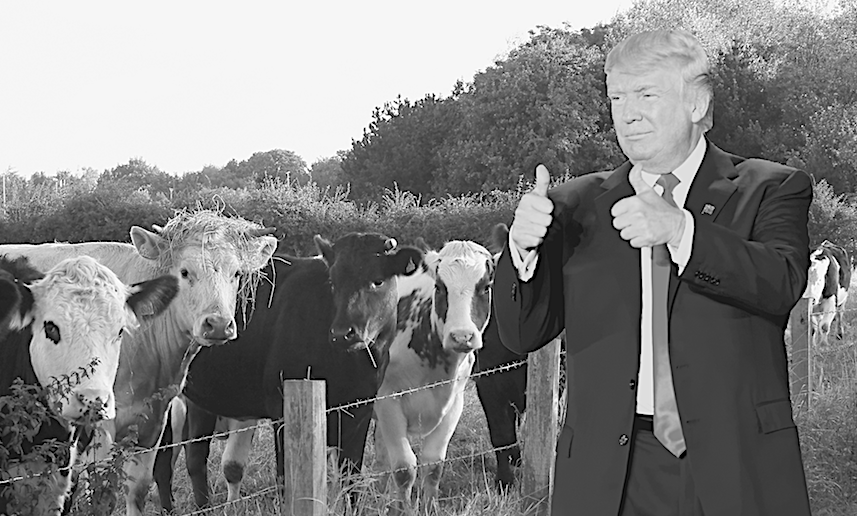This just in: Welsh laverbread has just been granted protected food status by the European Union!
For those who (like me until a couple of days ago) have no idea what laverbread is, what EU food protection is, or why the latter should be granted to the former, read on and hear about an unlikely staple of the Welsh breakfast table and strange byway of the food world where tradition, community, and commerce seem to have hammered out a way to coexist.
First, laverbread: It’s not bread. It’s a paste made of purple seaweed known as laver. In the old days, production of the stuff was a cottage industry in a particularly vivid sense: Residents of the Welsh coast would pull fronds of the stuff from rocks in the sea, put it up on the thatched roofs of their cottages to dry, then send it to the city, where it was boiled and minced into a not-altogether-attractive goo, and distributed. Laverbread, formed into patties, dusted with oatmeal, and fried, is part of the traditional Welsh breakfast, along with cockles and bacon. (Let’s see McDonald’s make a McMuffin out of that.)
And how do you protect a lump of mushed-up seaweed? Actually, what you protect is the ability to label it as being authentic Welsh laverbread. For the past decade or so, the EU has been offering growers, makers, and processors of local and traditional foods the equivalent of a trademark in the EU and the countries that have signed on to the program through bilateral trade deals. It’s not like a patent. If you don’t come from Wales, you’re welcome to make and sell your own seafood paste. You just can’t call it Welsh Laverbread, and you won’t get to adorn it with a little sticker attesting to its authenticity.
The stickers come in three flavors: Two have to do with geographic origin—a kind of extension of France’s “appellation contrôlée” rules governing the names of wines, cheeses, and other products—while the third, “traditional speciality guaranteed” (TSG), is about guaranteeing that a product is made in exactly the traditional way. For instance, pizza Napoletana—pizza as they make it in Naples—is protected under the TSG program. You don’t have to make your pizza in Naples to qualify, but you have to meet pages of detailed specifications covering ingredients, how the dough rises (twice for specific times and at specific temperatures), how to form the dough into a circle (with the fingers, no rolling pins allowed), how thick the crust can be (0.4 centimeters, plus or minus 10 percent), and how to cook it (in a wood-fired oven at 905 degrees Fahrenheit for 60 to 90 seconds).
The EU has registered more than 1,400 products. You can see the complete list at the Database of Origin & Registration (known as DOOR). You’ll see some familiar names—Stilton cheese, prosciutto di Modena. But there are far more that have never made it to global consciousness:
Reddish-fleshed Kintoa pork from black-pied pigs, born, raised and slaughtered in the Basque hills; or Malatya kayısısı, dried apricots from Turkey, raised and processed in the Malatya region “located in the Upper Euphrates basin of the Eastern Anatolia region in Turkey within the latitudes 38°29′03″N and longitudes 38°08′11″E”; or Pražská šunka, a specially cut, cooked, and smoked ham that’s been made in Prague since the 1860s.
The specificity and narrow focus starts to become intoxicating. Scotland’s Dundee cake, which dates back to 1700, must be decorated with almonds and flavored with sultanas and the peels of Seville oranges, and it can be made only in the portion of Dundee with postal codes beginning DD1 to DD7. (If that’s not specific enough for you, here’s what the official documents say: “The Dundee Cake boundary is bounded to the south by the Firth of Tay from a point on Invergowrie Bay to Carnoustie. It is bounded on the western and northern edges by the local authority boundaries of Dundee City, Perth & Kinross and Angus councils to a point west of Ethiebeaton Park at grid reference no 48643327. Its eastern edge is bounded by the a92 to the north and a930 to the east until it meets unnamed road at grid reference no 56263627, then follows unnamed road onto Westhaven road and a straight line to the unnamed road at Carnoustie bay.”)
Maybe it’s just me, but if you’re looking for romance and a sense of place and history, you can’t do better than the Brits. The UK maintains its own database of products that have applied for or received protection. It’s infinitely easier to use than the EU site, and it’s filled with lovely tales.
That Dundee cake, for instance, had its origin when the Keiller family of Dundee went into the marmalade business with an innovative, spreadable product. (Previous marmalades were cut in slices. Who knew?) The Keillers dominated the marmalade business for a century and a half, which meant that they generated a lot of orange peel, some of which was used in producing the cake.
Or there’s the Forfar Bridie, a horseshoe-shaped beef pasty (but without the potatoes of the Cornish pasty), unique to the Scottish towns of Forfar, Glamis, and Kinettles. J.M. Barrie, the author of Peter Pan, grew up just a few miles from Forfar and included them in his novel Sentimental Tommy. The documentation created to apply for registration quotes: “She nibbled dreamily at a hot sweet-smelling bridie, whose gravy oozed deliciously through a burst paper-bag.”
Or what about the Lough Neagh pollan, a fish harvested from an Irish lake that’s the largest body of freshwater in the UK. Legend says that the giant Finn McCool created the lake when he scooped up a handful of earth to throw at anther giant. Scientists say there’s been fishing there since the Bronze Age, though things allegedly picked up when Saint Colman founded a nearby monastery and passed his knowledge on to the local fishers. And as for the fish, “When I see them on a menu my heart skips,” says chef and food writer Paula McIntyre, according to the application.
Here’s the thing. In general, I believe in the diaspora of food and art and culture. Cultural appropriation, in my book, is almost always appropriate. But when I hear these stories, they give me pause.
Sure, the people who filed the paperwork and applied for protection are generally looking for commercial advantage; they want something they can market. And yet, it’s hard not to fall in love with the idea of a food—a fish, a plum, an orange-flavored cake—with ties to a specific place that go back far beyond the lifespan of a single human. Sometimes it all seems to veer into a kind of poetry rooted in place and history. For whatever reason, the Brits get that best.
It’s probably more striking for an American; our history is so short, and we seem to do our damnedest to ensure that place is fungible—an idea that keeps catching us up when old loyalties and old ways inconveniently re-emerge. The idea that place has rights of its own and that origin cannot be ignored often sounds abstract and hypothetical. But the laverbread and the Lough Neagh pollan and the Dundee cake beg to differ.
